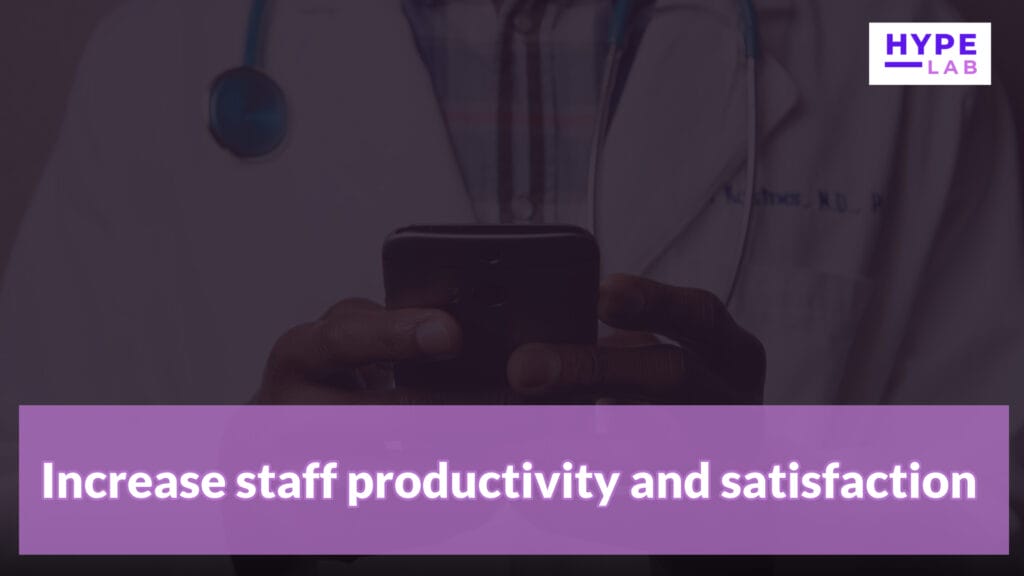
The healthcare industry is constantly evolving and adapting to meet the ever-changing needs of patients. To provide the best care possible, medical practices need to have efficient and effective systems in place. One of the most important aspects of any healthcare practice is bed management. It involves coordinating patient admissions, transfers, and discharges. With the increasing demand for quality healthcare services, it has become imperative for medical facilities to have a reliable and robust bed management system. We will explore the best bed management system for healthcare practices, how it can improve patient outcomes, and streamline administrative processes. We will discuss the features and benefits of this system, and how it can optimise bed utilisation, reduce wait times, and enhance overall patient satisfaction. By the end of this article, you will have a comprehensive understanding of the best bed management system for your healthcare practice and how it can revolutionise the way your facility operates.

Streamline patient flow with bed management
Effective patient flow is a crucial aspect of managing a hospital or healthcare practice. The ability to coordinate bed assignments and track patient movement can have a significant impact on the overall efficiency and quality of care provided. A robust bed management system can streamline this process by providing real-time visibility into bed availability, patient status and resource allocation. By automating and optimising bed management, healthcare providers can reduce wait times, improve patient satisfaction and maximise resource utilisation. Additionally, hospitals can enhance their operational efficiency by identifying bottlenecks, optimising discharge processes, and ensuring smooth patient transitions. Implementing a comprehensive bed management system is a vital step in delivering high-quality healthcare services, prioritising patient safety, and achieving operational excellence.
Improve efficiency in your hospital
To enhance efficiency in your hospital, apart from implementing a dependable bed management system, there are several other strategies that you can adopt. Effective communication among healthcare providers is crucial to ensure seamless patient care and to avoid any delays. You can streamline workflows and minimise errors by implementing clear protocols and standardised processes. Regularly assessing and optimising staffing levels based on patient volume and acuity can ensure that resources are allocated appropriately. Additionally, leveraging technology solutions such as electronic medical records and telehealth platforms can improve communication, reduce administrative tasks, and provide better access to care for patients. By continuously evaluating and refining operational processes, hospitals can create a more efficient and patient-centered environment, ultimately improving outcomes and satisfaction for both patients and healthcare professionals

Optimise bed allocation for patients
To optimise the allocation of beds for patients, a comprehensive bed management system is essential for healthcare practices. This system enables hospitals to efficiently track the availability and utilisation of beds, ensuring that patients are allocated to the most appropriate and timely accommodations. By implementing a bed management system, hospitals can effectively manage patient flow, reduce wait times, and improve overall patient satisfaction. This streamlined approach enables healthcare providers to make informed decisions regarding bed assignments, optimising resources and enhancing patient care. With a well-designed bed management system in place, hospitals can effectively meet the demands of their patient population while maximising operational efficiency and delivering high-quality healthcare services
Enhance patient experience and care
One of the key goals of any healthcare practice is to enhance the overall patient experience and improve the quality of care provided. A robust bed management system plays a vital role in achieving this objective. By efficiently managing bed allocation, hospitals can ensure that patients receive prompt and appropriate care, reducing the need for long wait times and unnecessary transfers. This not only improves patient satisfaction but also enhances outcomes by allowing healthcare providers to deliver timely and targeted interventions. Additionally, an effective bed management system enables hospitals to streamline communication and coordination between different departments, fostering a collaborative and patient-centered approach to care. By prioritising the implementation of a reliable bed management system, healthcare practices can optimise their resources, minimise disruptions, and ultimately provide the best possible care for their patients.
Minimise wait times for patients
Improving patient satisfaction and ensuring timely access to necessary treatments are key aspects of providing high-quality healthcare. However, in a busy hospital setting, long wait times can cause frustration and anxiety, negatively impacting the patient experience. By implementing an efficient bed management system, healthcare practices can better allocate resources and optimise patient flow. This allows healthcare providers to quickly identify available beds, efficiently admit and discharge patients, and coordinate care seamlessly between departments. By reducing wait times, hospitals can enhance the overall patient experience and ultimately improve patient outcomes.
Real-time tracking of bed availability
In today’s fast-paced healthcare environment, real-time tracking of bed availability has become an essential component of effective bed management systems. With the ability to monitor and update bed availability in real time, hospitals can streamline patient admissions, transfers, and discharges, ensuring that patients receive the care they need on time. By utilising sophisticated tracking technology, healthcare providers can have a comprehensive view of bed occupancy, allowing them to optimise patient flow and allocate resources efficiently. This not only improves the overall efficiency of the hospital but also enhances patient satisfaction by reducing wait times and ensuring that patients are placed in appropriate beds based on their specific healthcare needs. Implementing a real-time tracking system for bed availability is a crucial step for healthcare practices looking to enhance their operations and provide the highest level of care to their patients.
Reduce bed turnover time
One key aspect of an effective bed management system is the ability to reduce bed turnover time. By optimising the process of admitting, transferring, and discharging patients, hospitals can significantly decrease the time it takes to prepare a bed for a new patient. This not only improves the overall efficiency of the hospital but also ensures that patients receive timely care and reduces the likelihood of overcrowding. Implementing strategies such as streamlining paperwork, improving communication between departments, and utilising automated systems can help healthcare practices effectively reduce bed turnover time and enhance the patient experience. By focusing on this critical aspect of bed management, hospitals can create a more streamlined and patient-centric healthcare environment.

Increase staff productivity and satisfaction
To increase staff productivity and satisfaction in healthcare practice, it is essential to prioritise effective communication and streamline workflows. By implementing a robust bed management system, hospitals can enhance staff productivity by providing real-time updates on bed availability, patient status, and care requirements. This enables healthcare professionals to efficiently allocate resources and manage patient flow, minimising the time spent on administrative tasks and maximising the time dedicated to delivering quality care to patients. Additionally, a well-designed bed management system can improve staff satisfaction by reducing the burden of manual paperwork and promoting seamless collaboration between different departments. By empowering staff with efficient tools and processes, healthcare practices can create a positive work environment that fosters productivity and ultimately enhances patient outcomes.
Comprehensive data for informed decisions
In today’s rapidly evolving healthcare landscape, the ability to make informed decisions is crucial for the success of any healthcare practice. A comprehensive bed management system goes beyond simply tracking bed availability and patient status. It provides healthcare professionals with a wealth of data that can be analysed and utilised to make strategic decisions. By leveraging the power of data analytics, healthcare providers can gain valuable insights into patient flow patterns, resource utilisation, and operational efficiency. This enables them to proactively identify bottlenecks, optimise bed allocation, and allocate resources effectively. With access to comprehensive data, healthcare practitioners can make informed decisions that not only enhance patient care but also drive cost savings and improve overall operational performance.
Elevate your healthcare practice today
Are you looking to elevate your healthcare practice and streamline your bed management process? Look no further. With our cutting-edge bed management system, you can revolutionise the way your hospital manages beds and cares for patients. Our system offers a seamless and intuitive interface that allows healthcare professionals to efficiently track bed availability, patient status, and other critical information in real time. By automating and digitising the bed management process, you can eliminate the risks of errors and miscommunication, ensuring smooth patient transfers and optimising resource allocation. With our bed management system, you can enhance patient care, improve operational efficiency, and ultimately take your healthcare practice to new heights. Don’t miss out on the opportunity to enhance your practice and provide the best possible care for your patients.
In conclusion, implementing an efficient and reliable bed management system is crucial for any healthcare practice. It not only improves patient care and satisfaction but also streamlines processes and increases overall efficiency. With so many options available, it is important to carefully consider your practice’s specific needs and choose a system that best fits your requirements. By investing in a quality bed management system, your healthcare practice can operate more smoothly and ultimately provide the best possible care for your patients.
FAQ
What are the key features to look for in a bed management system for a healthcare practice?
When selecting a bed management system for healthcare practice, key features to consider include real-time bed tracking and availability updates, integration with electronic health records (EHR) systems, automated patient admission and discharge processes, customisable alerts and notifications, reporting and analytics capabilities for bed utilisation and patient flow optimisation, and compliance with healthcare regulations and standards such as HIPAA. Additionally, ease of use, scalability, and the ability to support multi-facility operations are important factors to look for in a bed management system.
How can a bed management system improve patient flow and reduce wait times in a healthcare facility?
A bed management system can improve patient flow and reduce wait times in a healthcare facility by providing real-time visibility of available beds, enabling efficient allocation of resources, minimising delays in transferring patients between units, and streamlining the discharge process. This helps in optimising bed utilisation, reducing bottlenecks, and ensuring timely access to care for patients, ultimately improving overall operational efficiency and patient satisfaction.
What are the benefits of integrating a bed management system with electronic health records (EHR) systems?
Integrating a bed management system with electronic health records (EHR) systems streamlines patient admissions, transfers, and discharges, enhancing care coordination and reducing errors. Real-time bed availability data helps optimise resource allocation, improve patient flow, and reduce wait times. It also enables better communication among healthcare staff, leading to improved patient safety and satisfaction. Additionally, the integration provides a holistic view of patient information, facilitating comprehensive and efficient care delivery. Ultimately, this integration improves operational efficiency, enhances quality of care, and contributes to better healthcare outcomes.
How can a bed management system help healthcare practices optimise bed utilisation and reduce costs?
A bed management system can help healthcare practices optimise bed utilisation and reduce costs by providing real-time visibility into bed availability, streamlining patient admissions and discharges, reducing wait times, minimising overcrowding, and facilitating efficient patient flow. By automating processes and improving communication among staff members, a bed management system can help hospitals allocate resources effectively, prevent bottlenecks, and ultimately improve patient outcomes while reducing operational costs associated with unnecessary hospital stays or delays in care.
What factors should healthcare practices consider when selecting a bed management system for their specific needs and requirements?
When selecting a bed management system, healthcare practices should consider factors such as ease of use, integration with existing systems, scalability, customisation options, support and training provided, compliance with regulations, reporting capabilities, and cost-effectiveness. It is essential to choose a system that meets the specific needs and requirements of the facility, enhances operational efficiency, improves patient care, and aligns with the organisation’s long-term goals and objectives. Additionally, the system should be user-friendly and adaptable to changes in the healthcare environment to ensure seamless workflow and optimal patient outcomes.


 Previous Post
Previous Post Next Post
Next Post